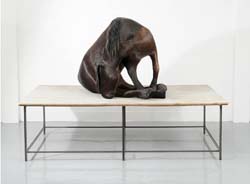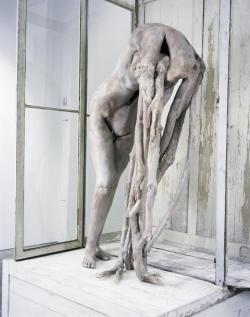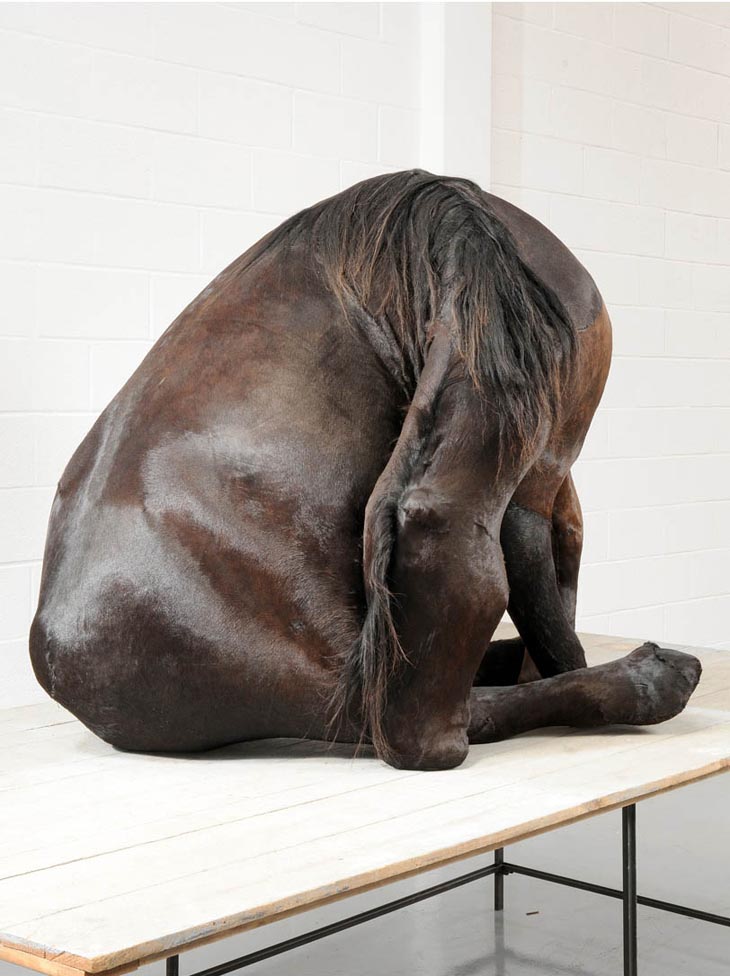

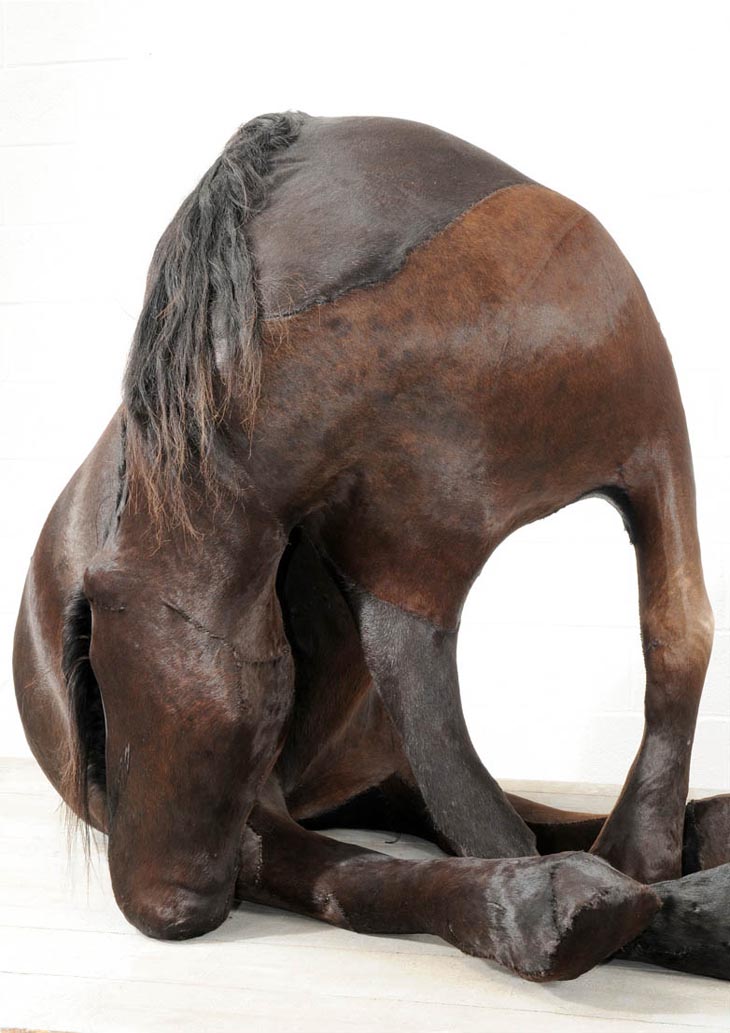
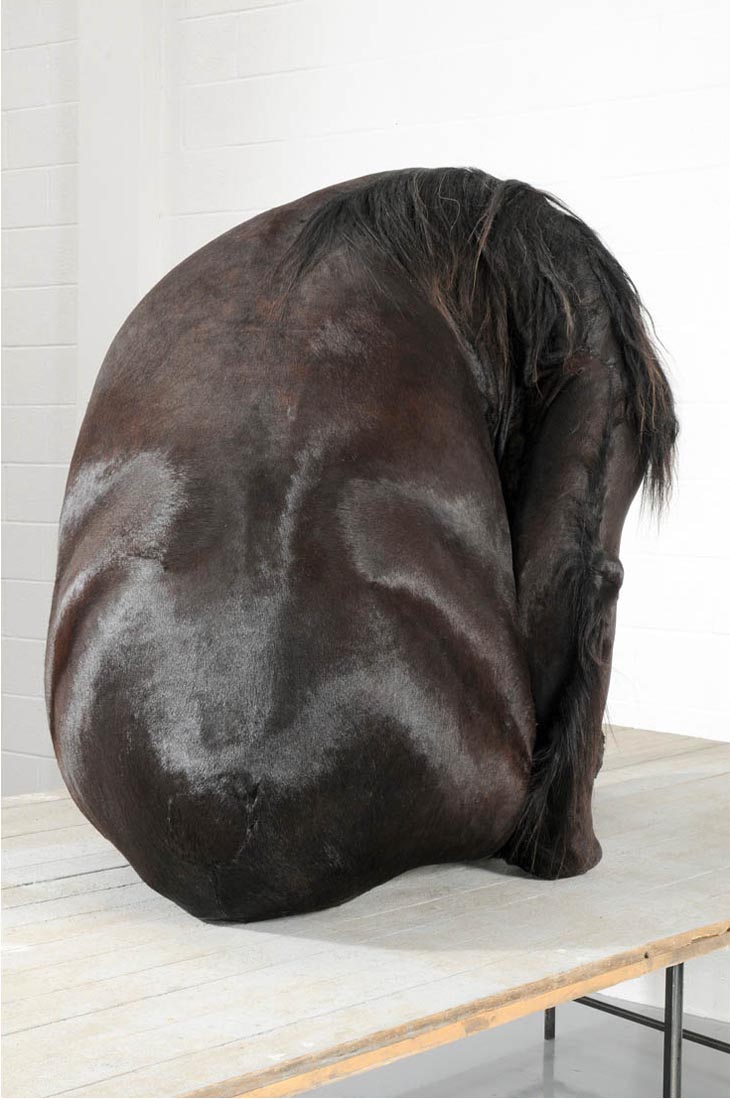


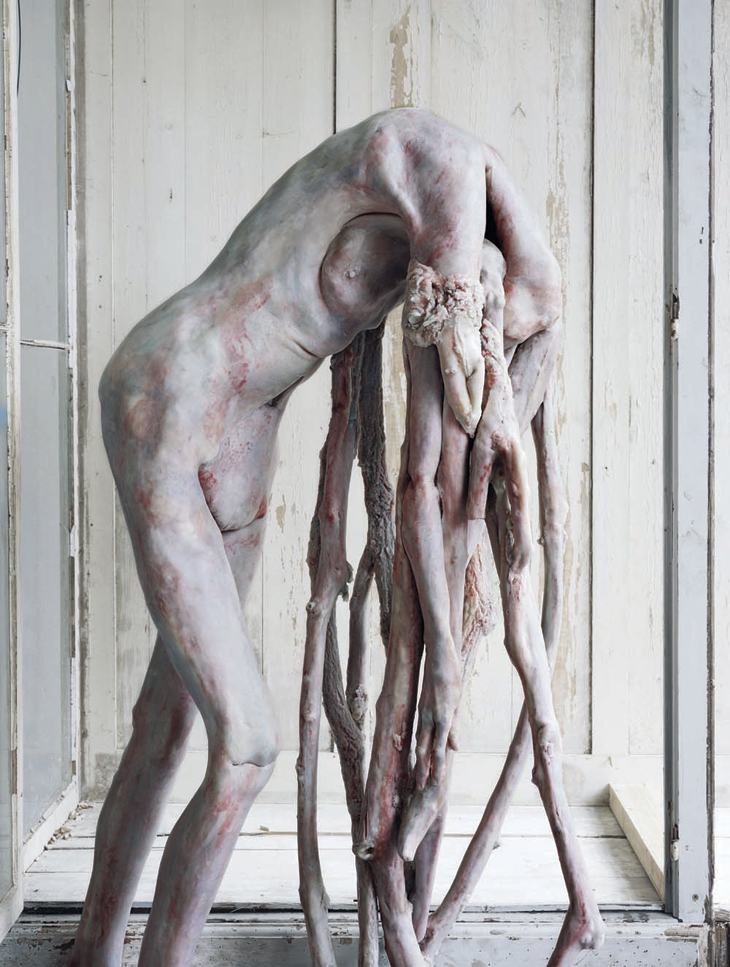

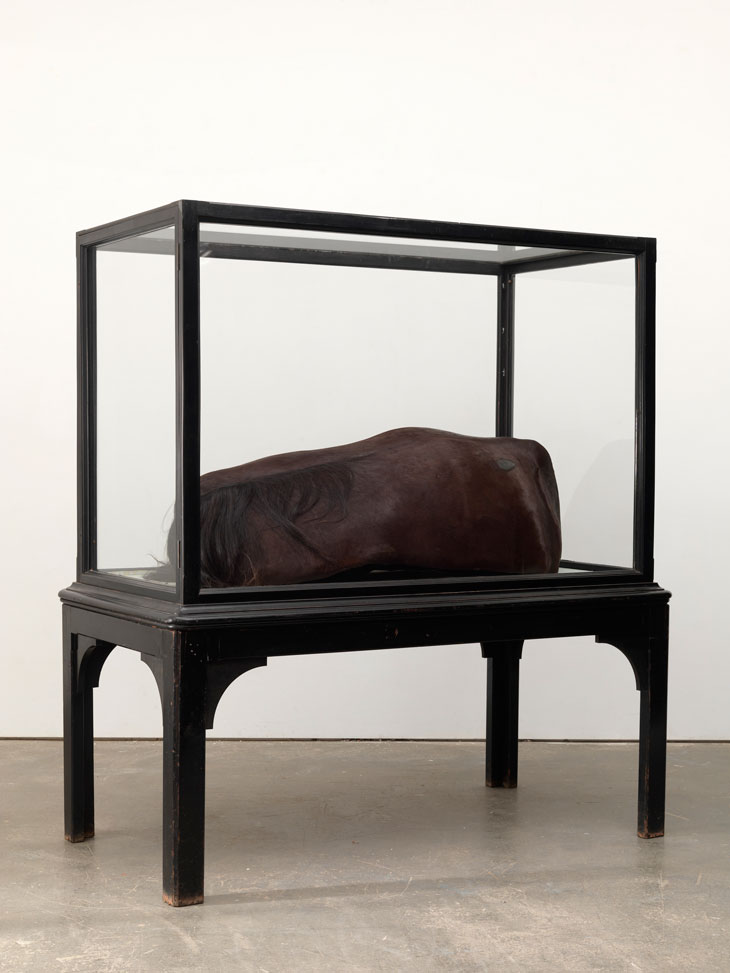
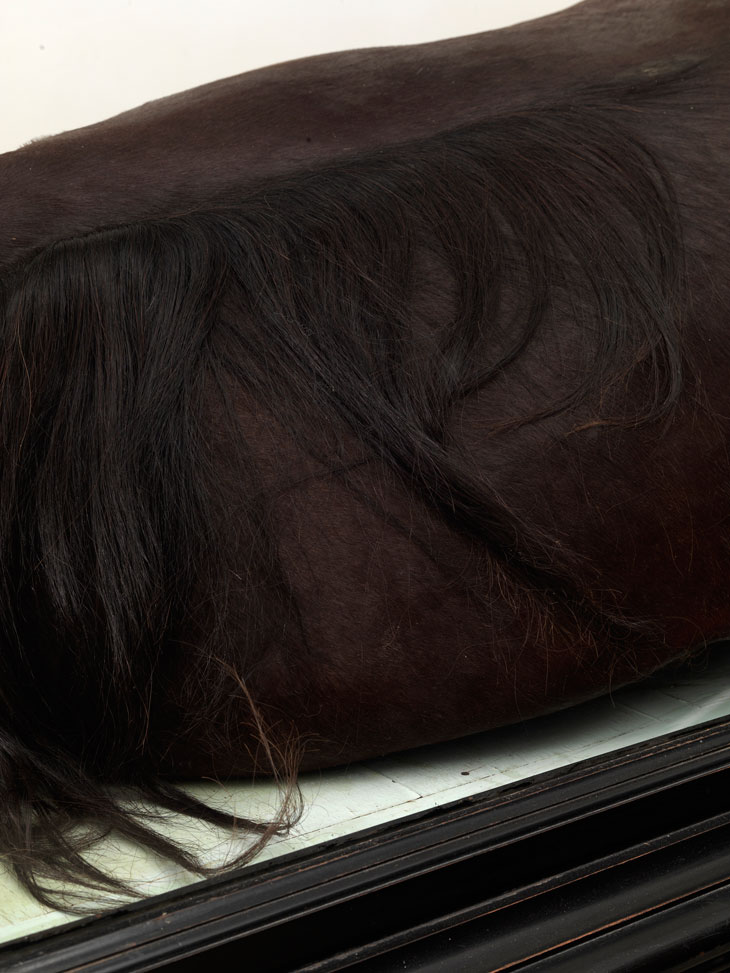
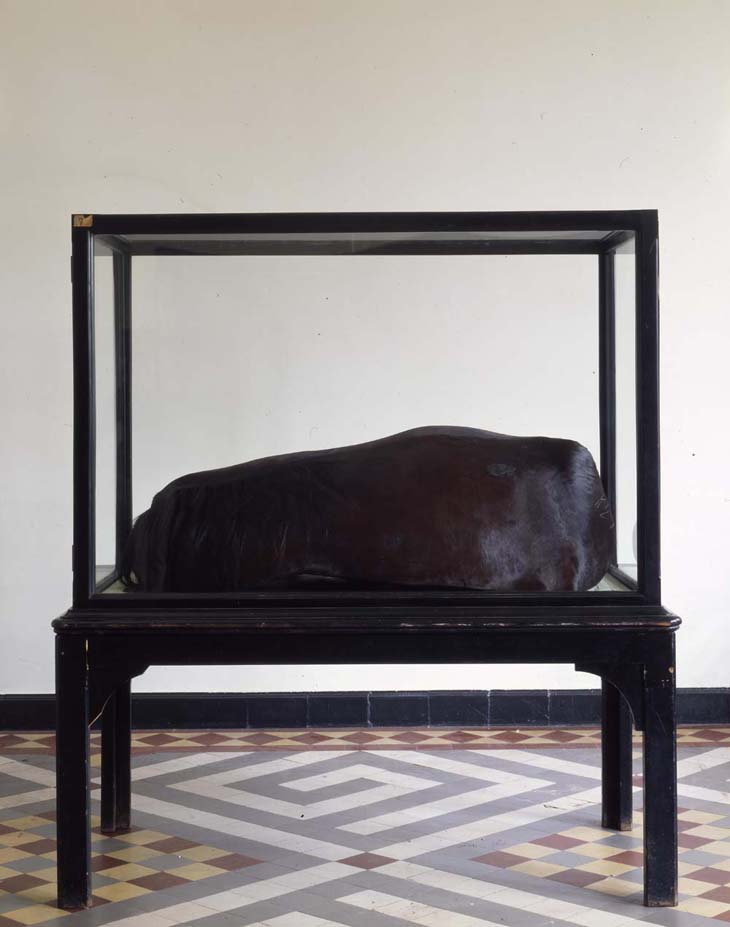
ARTIST:
Berlinde De Bruyckere
Their lack of eyes and sex emphasised the importance of seeing each body as a whole. A few years later she turned to the horse as subject, covering pseudo-anatomical works in familiar materials that inspire both a sense of nightmarish displacement and of visual comfort, of animal suffering and material abstraction.
The horse pieces are eyeless (K36 (The Black Horse), 2003) and sometimes headless too (K21, 2006). The glossiness of their skin underscores all of the things that are covered and hidden, a sensual, almost tender casing for these uncomfortable shapes. Marthe (2008) shows a body in duality, disgusting but still half-human, a hand found in its twig-like limbs reminiscent of Ovidian-style transformation; it too, despite its lifelike physicality, is sexless, headless, inert, a re-imagined object. “It is not because you never see a head that it looks like it has been cut off. It is, rather, that I no longer think the presence of a head is necessary. The figure as a whole is a mental state. The presence or absence of a head is irrelevant.†An unsettling, reconfigured concept of the body, helpless yet contorted, takes centre stage in Berlinde de Bruyckere’s faceless sculptures. Abject deformation is turned into beauty as if the artist is trying to wrestle a shape from abstract form. That each body, whether human or equine, stands on a plinth or inside a cabinet, as if posing for the viewer, emphasises their monumentalised objecthood and the tension between what these objects represent and what they actually are.
De Bruyckere began making work around ideas of the human figure in the early 1990s, first through its absence, stacking and draping woollen blankets on furniture, symbolising shelter and vulnerability. Then she added bodies made of wax, almost completely covered in wool; imperfect, sexless and headless.
The horse pieces are eyeless (K36 (The Black Horse), 2003) and sometimes headless too (K21, 2006). The glossiness of their skin underscores all of the things that are covered and hidden, a sensual, almost tender casing for these uncomfortable shapes. Marthe (2008) shows a body in duality, disgusting but still half-human, a hand found in its twig-like limbs reminiscent of Ovidian-style transformation; it too, despite its lifelike physicality, is sexless, headless, inert, a re-imagined object. “It is not because you never see a head that it looks like it has been cut off. It is, rather, that I no longer think the presence of a head is necessary. The figure as a whole is a mental state. The presence or absence of a head is irrelevant.†An unsettling, reconfigured concept of the body, helpless yet contorted, takes centre stage in Berlinde de Bruyckere’s faceless sculptures. Abject deformation is turned into beauty as if the artist is trying to wrestle a shape from abstract form. That each body, whether human or equine, stands on a plinth or inside a cabinet, as if posing for the viewer, emphasises their monumentalised objecthood and the tension between what these objects represent and what they actually are.
De Bruyckere began making work around ideas of the human figure in the early 1990s, first through its absence, stacking and draping woollen blankets on furniture, symbolising shelter and vulnerability. Then she added bodies made of wax, almost completely covered in wool; imperfect, sexless and headless.

